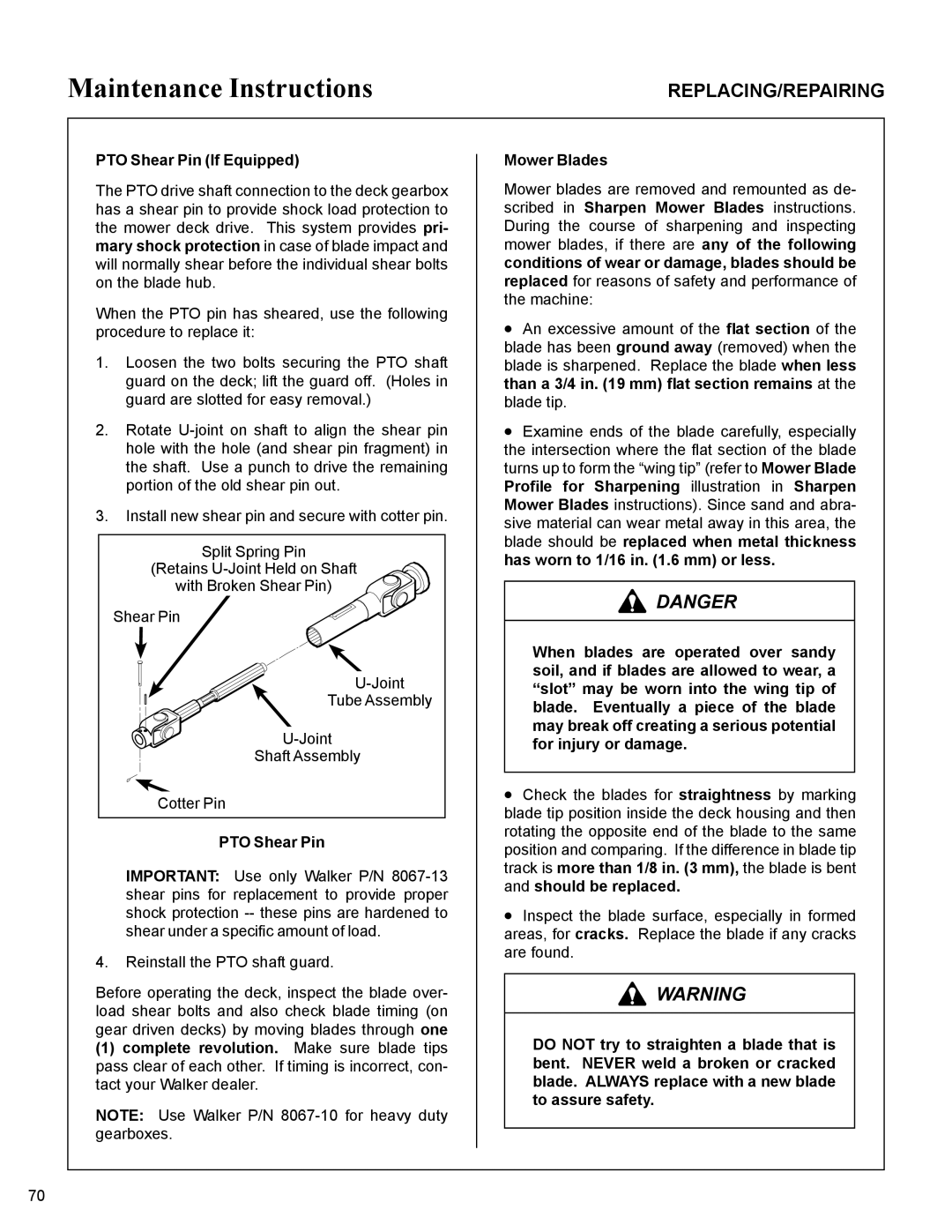
Maintenance Instructions | REPLACING/REPAIRING |
PTO Shear Pin (If Equipped)
The PTO drive shaft connection to the deck gearbox has a shear pin to provide shock load protection to the mower deck drive. This system provides pri- mary shock protection in case of blade impact and will normally shear before the individual shear bolts on the blade hub.
When the PTO pin has sheared, use the following procedure to replace it:
1.Loosen the two bolts securing the PTO shaft guard on the deck; lift the guard off. (Holes in guard are slotted for easy removal.)
2.Rotate
3.Install new shear pin and secure with cotter pin.
Split Spring Pin
(Retains
with Broken Shear Pin)
Shear Pin
Tube Assembly
Shaft Assembly
Cotter Pin
PTO Shear Pin
IMPORTANT: Use only Walker P/N
4.Reinstall the PTO shaft guard.
Before operating the deck, inspect the blade over- load shear bolts and also check blade timing (on gear driven decks) by moving blades through one
(1)complete revolution. Make sure blade tips pass clear of each other. If timing is incorrect, con- tact your Walker dealer.
NOTE: Use Walker P/N
Mower Blades
Mower blades are removed and remounted as de- scribed in Sharpen Mower Blades instructions. During the course of sharpening and inspecting mower blades, if there are any of the following conditions of wear or damage, blades should be replaced for reasons of safety and performance of the machine:
•An excessive amount of the flat section of the blade has been ground away (removed) when the blade is sharpened. Replace the blade when less than a 3/4 in. (19 mm) flat section remains at the blade tip.
•Examine ends of the blade carefully, especially the intersection where the flat section of the blade turns up to form the “wing tip” (refer to Mower Blade Profile for Sharpening illustration in Sharpen Mower Blades instructions). Since sand and abra- sive material can wear metal away in this area, the blade should be replaced when metal thickness has worn to 1/16 in. (1.6 mm) or less.
![]() DANGER
DANGER
When blades are operated over sandy soil, and if blades are allowed to wear, a “slot” may be worn into the wing tip of blade. Eventually a piece of the blade may break off creating a serious potential for injury or damage.
•Check the blades for straightness by marking blade tip position inside the deck housing and then rotating the opposite end of the blade to the same position and comparing. If the difference in blade tip track is more than 1/8 in. (3 mm), the blade is bent and should be replaced.
•Inspect the blade surface, especially in formed areas, for cracks. Replace the blade if any cracks are found.
![]() WARNING
WARNING
DO NOT try to straighten a blade that is bent. NEVER weld a broken or cracked blade. ALWAYS replace with a new blade to assure safety.
70
